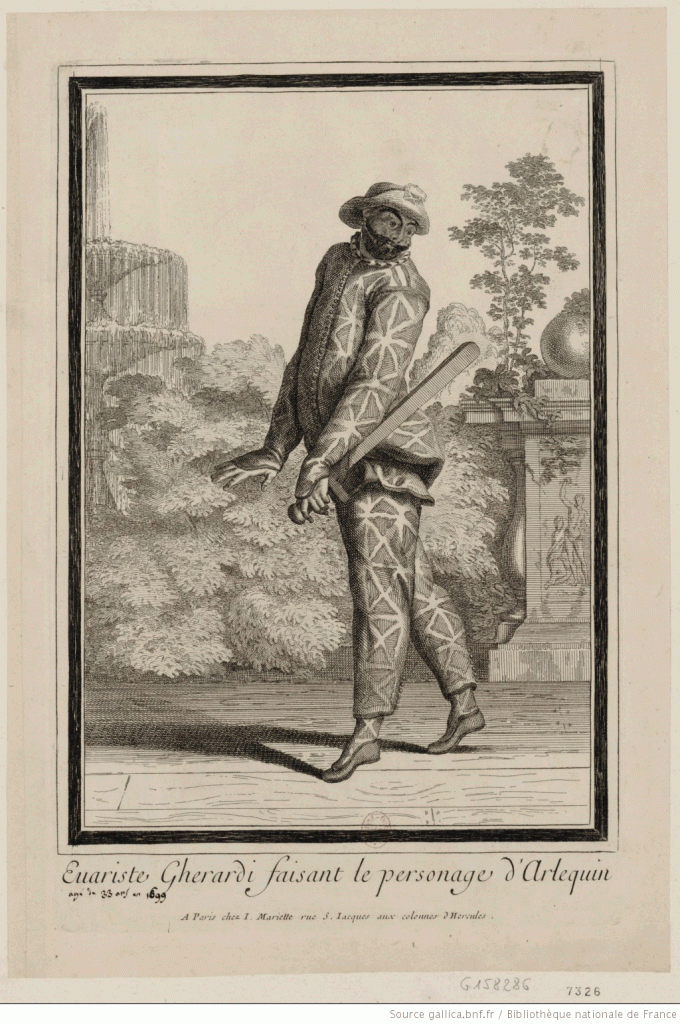Harlequin
12.12.2016
Evariste Gherardi faisant le personage d'Arlequin. Paris chez J. Mariette rue S. Jacques aux colonnes d'Hercules, vers 1710. BnF/EST. Coll. Hennin.
Harlequin, by Joël Huthwohl
Although originally from Italy, the Harlequin would only appear in France at the royal court in end of the 16th century when an acting troupe from Mantua visited the court of King Henry III. One of them was Tristano Martinelli, the first actor to have used the term Harlequin in theatre history. As a stock character in the commedia dell’arte, alongside Pulcinella, Il Dottore (the Doctor) and Pantalone, the Harlequin is also the heir to popular narratives from the Middle Ages and the devilish character Hellequin. Back then he wore the plain patched clothing of a beggar, and was covered in leaves as if he had just emerged from a forest; unshaven and a little disturbing. His face was hidden behind a black leather half-mask with two tiny holes for darting eyes and a bulge on the front to accentuate the rough monstrosity of the character. As much of an acrobat as a comedian he was nimble, cowardly, greedy and rude. He bounded on stage like a monkey and taunted his audience in a squeaky, parrot-like voice.
As the decades passed by, Harlequin evolved and became more civilised whilst remaining the most famous character in pantomime theatre. His costume now features the classic, brightly coloured diamond pattern; his role has lost much of its improvisation in favour of set responses written for him by theatre writers like Goldoni and Marivaux, as seen in Arlequin poli par l’amour. Overshadowed in France after the departure of the Italian actors, Harlequin came back with a vengeance after the Revolution. By the end of the XXth century, it was Giorgio Strehler who brought the Harlequin back in vogue following the resounding success of his production of Arlequin serviteur de deux maîtres.
Joël Huthwohl is a theatre historian and the director of the theatre arts department at the Bibliothèque nationale de France

